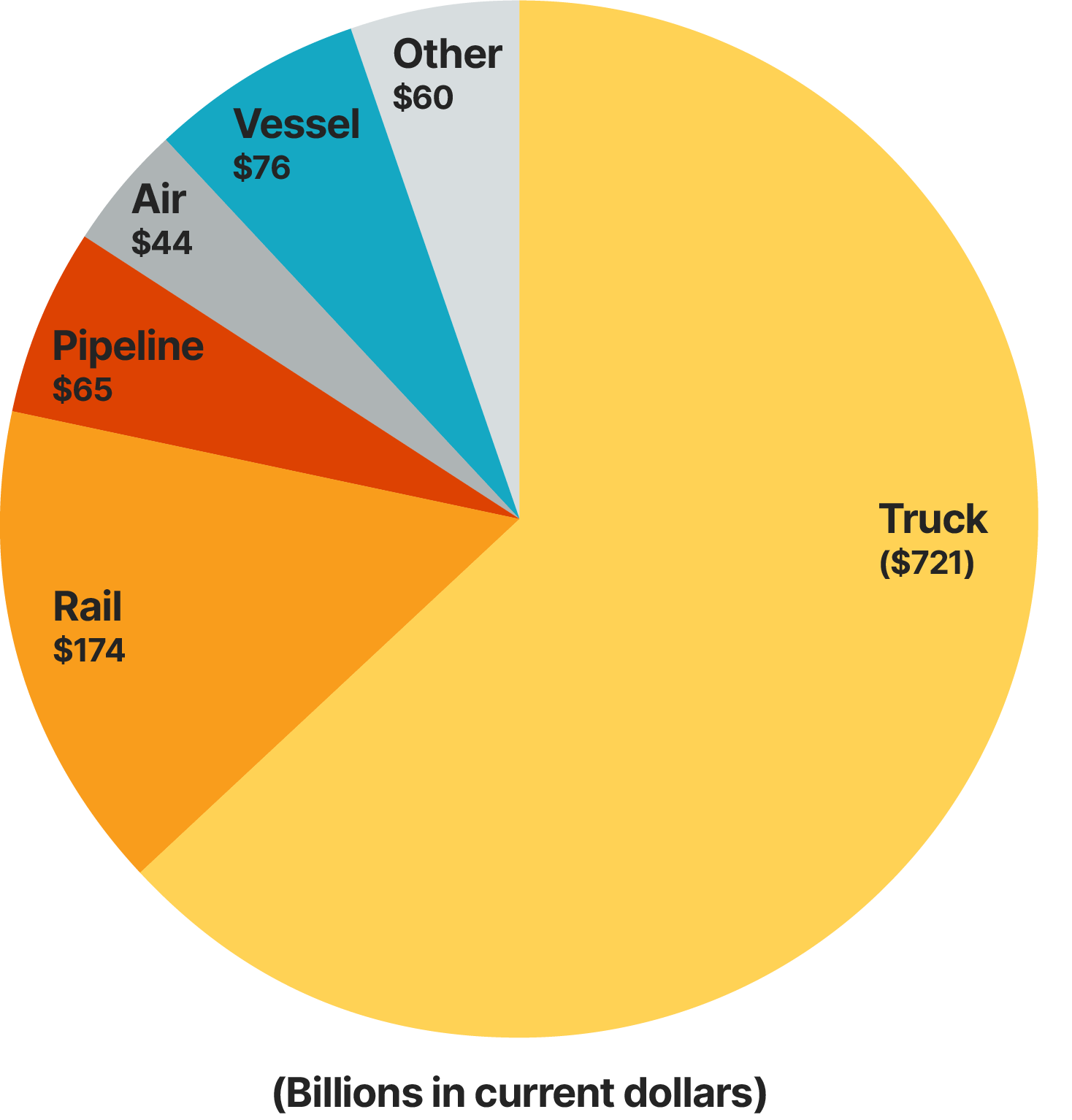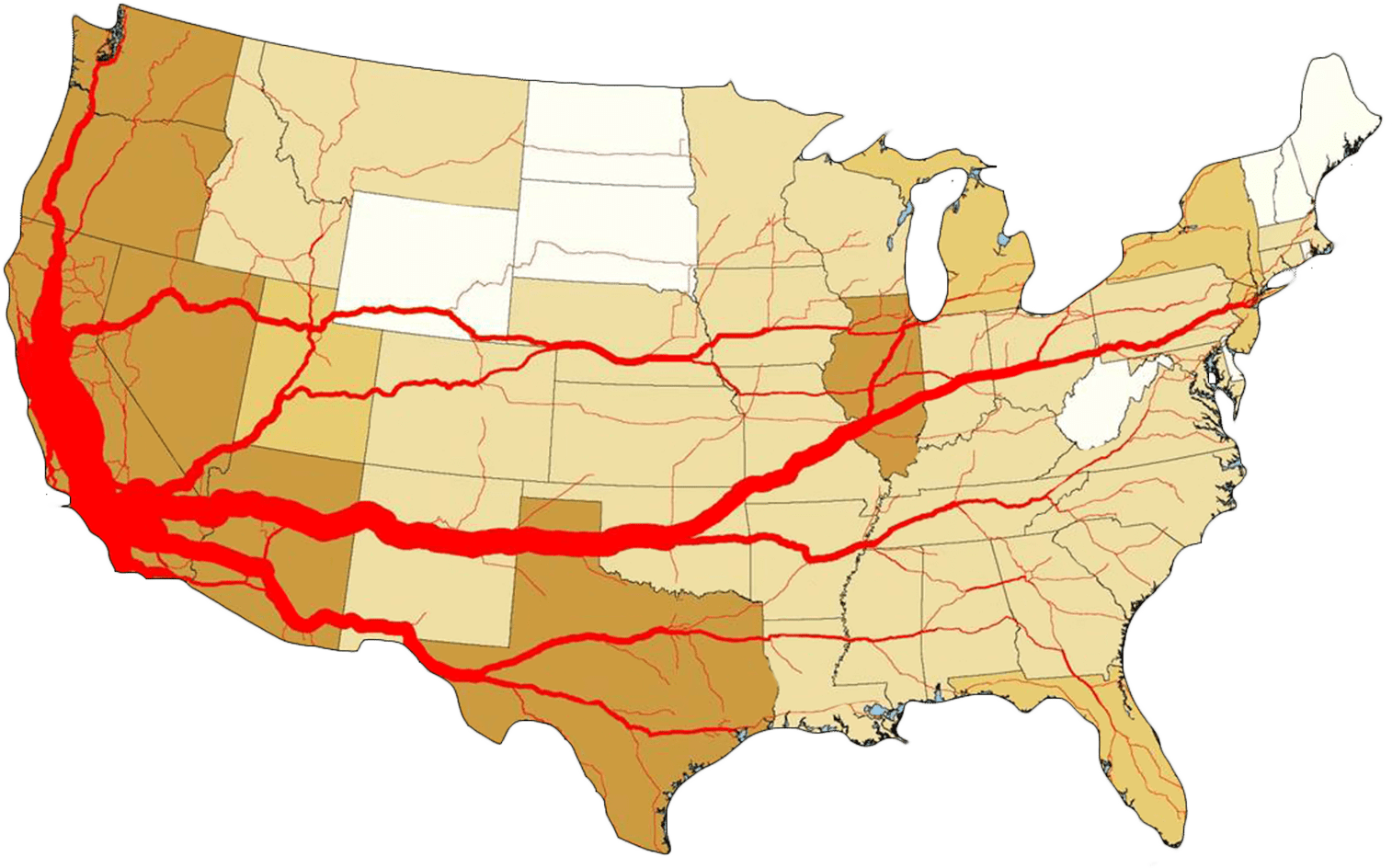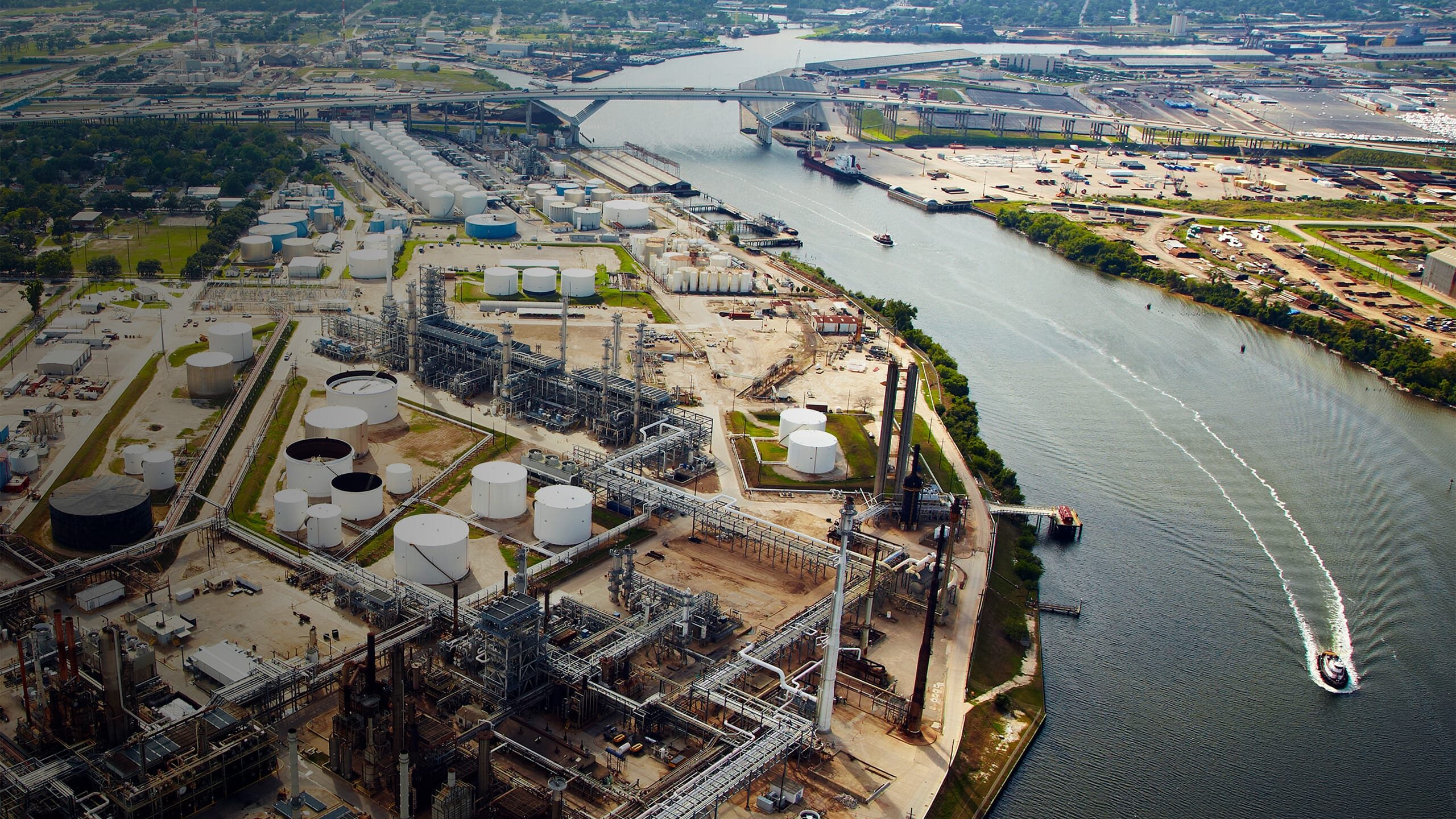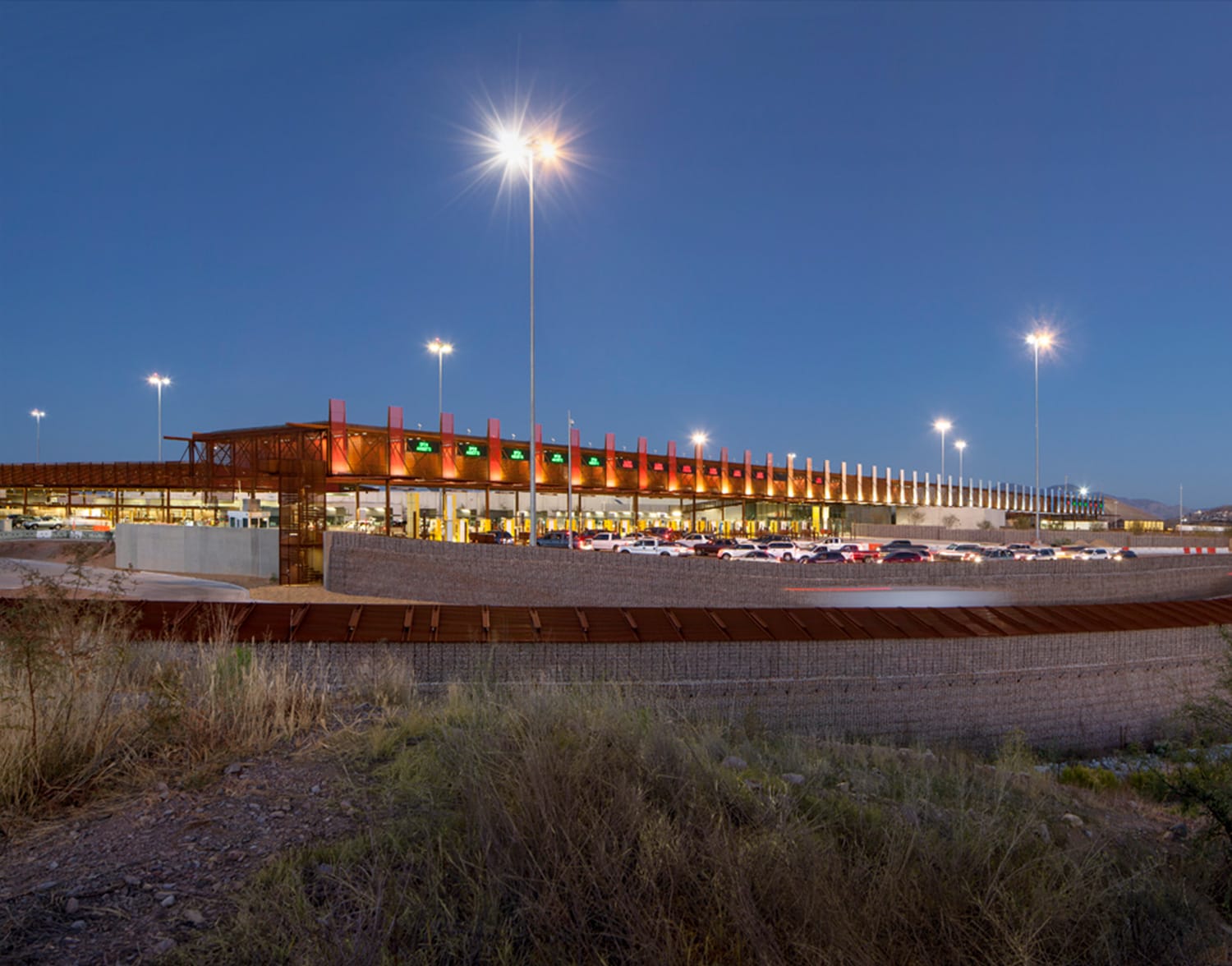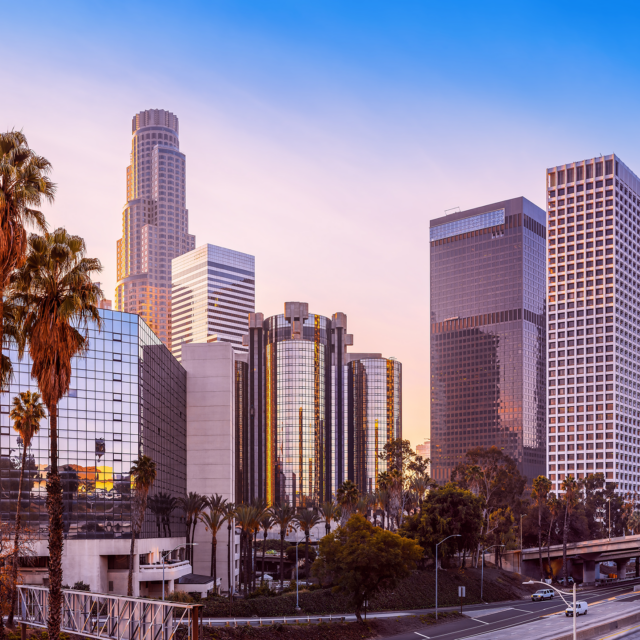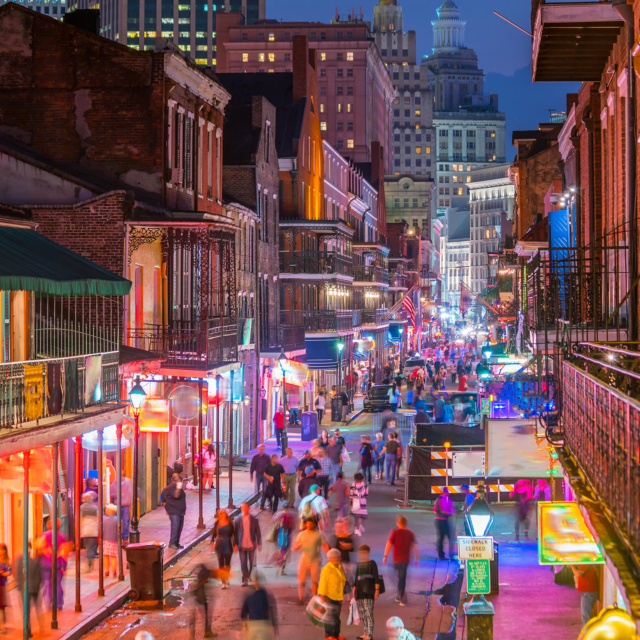Since the 1956 Federal Aid Highway Act was conceived, this system has become the primary means of transporting goods across the country. Autonomous trucks currently being tested along the I-10 corridor will recalibrate the economies that have developed around this network.
2/3
goods shipped via truck in the U.S.
